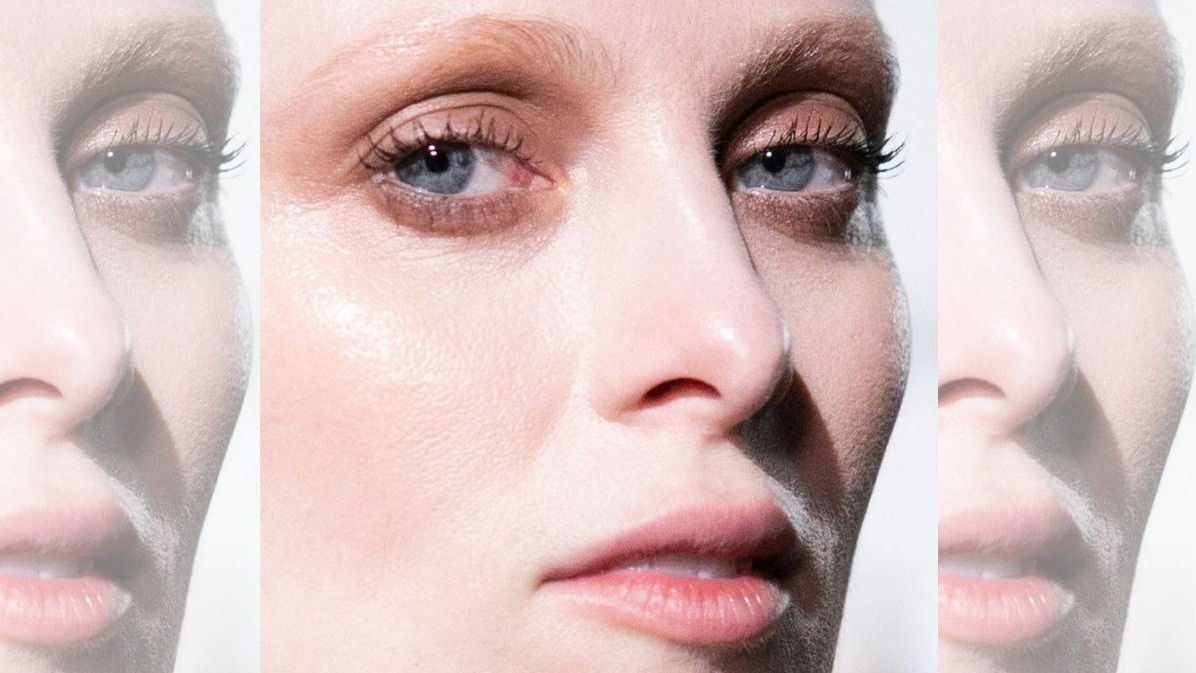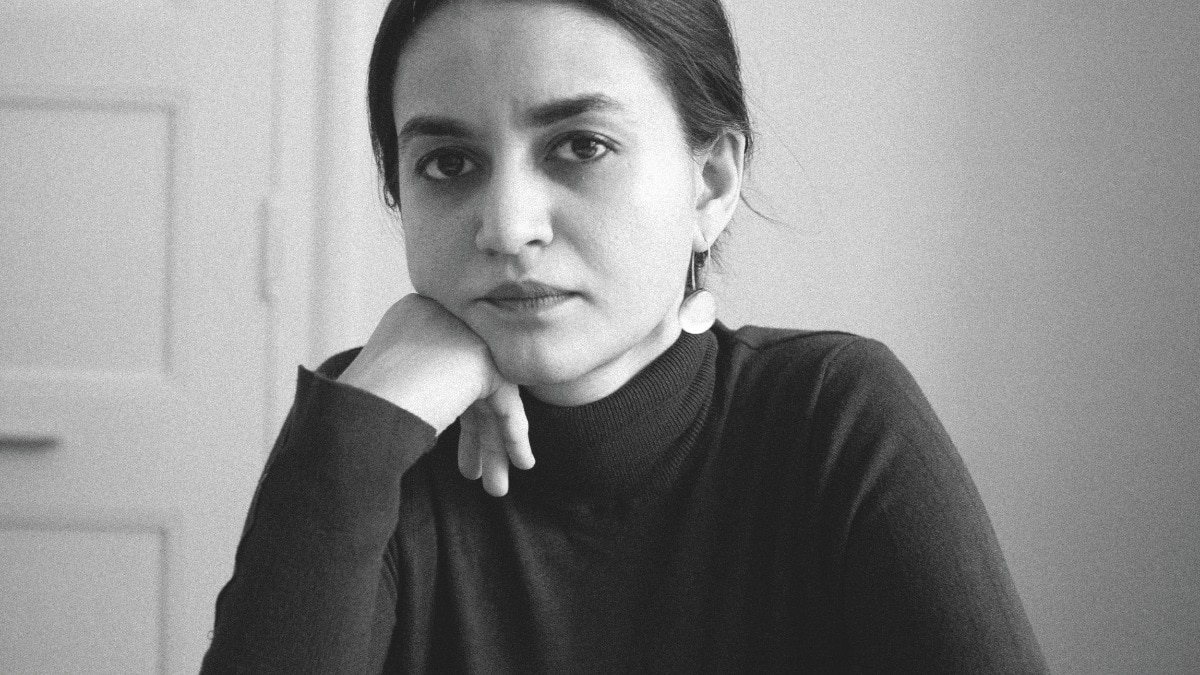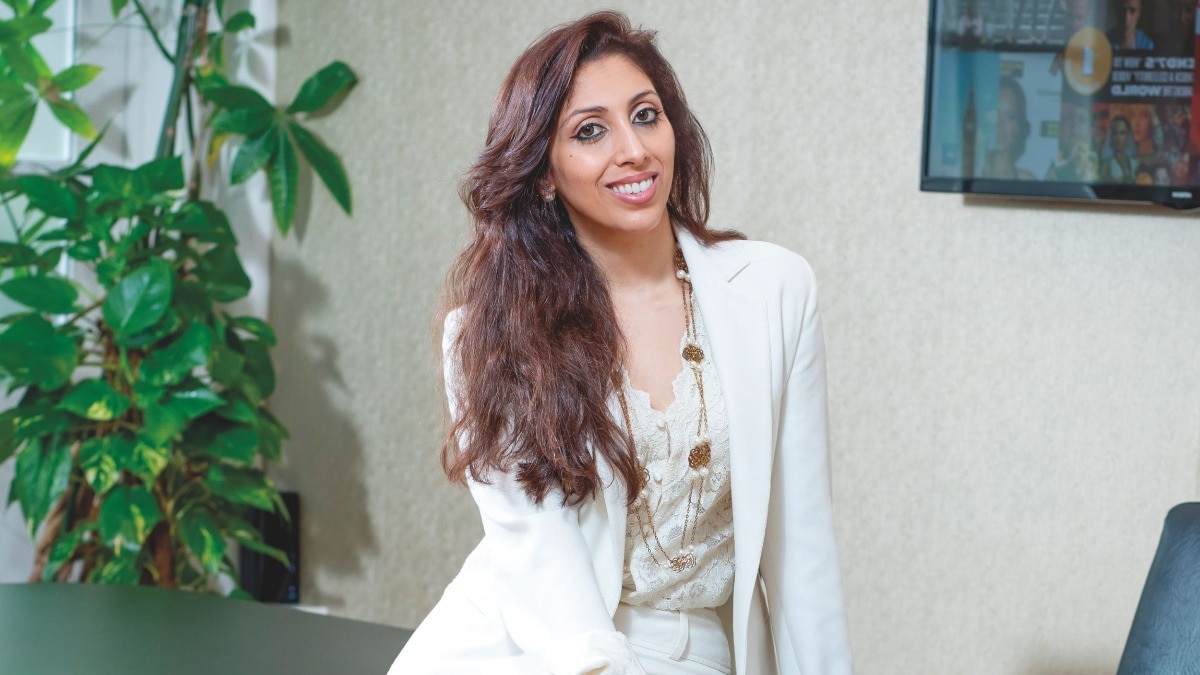#SkinSchool: Is facial acupuncture the needling treatment to rival Botox?
Could this ancient practice be the natural answer to firmer, clearer, healthier skin? The experts weigh in.


There appears to be an apparent dichotomy within skincare right now. In one respect there is an increasing prevalence of aesthetic procedures sought to maintain a youthful appearance. While at the same time there’s the trend towards more mindful, 'clean' beauty for those who are conscious about what goes on—and in—their body. Of course, wrinkle-relaxing treatments such as Botox, when performed by a certified and trusted practitioner, can effectively help to soften fine lines and wrinkles, but are there effective alternatives for those who prefer a more natural route to skin rejuvenation? Facial acupuncture may be one.
A gentler, more holistic approach, acupuncture for cosmetic use aligns with the increasing wish for natural, sustainable skincare results—without the risks and side-effects that can come with injectable treatments. Using the principles of ‘energy highways’ to promote younger, healthier-looking skin, facial acupuncture is causing a seismic shift in the skincare world, with celebrities such as Rita Ora, Ashley Graham, and Jennifer Aniston waxing lyrical about the results. As more and more people look to less invasive procedures alongside the ‘notox’ movement gaining traction (the hashtag has over 10.3 million views on TikTok), is it time to reconsider a different type of needle in the quest for beautiful skin?
“My clients are aware that to get the best results for their skin, they can’t just rely on Botox and filers,” says Sarah Bradden, founder of The Bradden Method and cosmetic acupuncturist at the Nejati Clinic (from £365, ₹38,000 aprox.). It's about “looking after the energy in your body through acupuncture,” given that “a complete 360 health perspective will all contribute to how your skin looks and behaves”.
What exactly is facial acupuncture?
“Also known as cosmetic acupuncture or facial rejuvenation acupuncture, it is a non-invasive treatment rooted in traditional Chinese medicine,” says Dr John Tsagaris, practitioner of Traditional Chinese Medicine at The HVN (from £450, ₹47,000 approx.). “The holistic approach of the method addresses facial concerns and identifies underlying ageing factors using traditional acupuncture principles.”
It involves the insertion of thin, sterile needles into specific ‘acupoints’ on the face to treat underlying imbalances that can contribute to ageing. Cosmetic acupuncture is often compared with neurotoxins like Botox as it helps to reduce the appearance of fine lines and wrinkles, however, the primary advantage of face acupuncture is that it does not diminish your facial muscles (like such injectable treatments can).
How does facial acupuncture work?
“In Chinese medicine, it is believed that acupuncture can balance the flow of energy or life force known as chi or qi ('chee') that flows through the body along specific pathways called meridians,” explains Bradden. When chi is balanced and flowing freely, you’ll experience good skin health, whereas blockages or imbalances in the flow of chi can lead to ailments or discomfort. “Ageing is determined by our cellular health and facial acupuncture addresses this by regulating and harmonising the chi,” she adds. “Acupuncture will optimise your whole system, encouraging good cell cellular and mitochondria health, which will help to prevent premature loss of fat, bone and tissue.”
During cosmetic acupuncture, fine needles are inserted into specific areas of the face causing ‘microtrauma’ to the localised tissue. This triggers an inflammatory response. “The needles help to stimulate the flow of energy and blood circulation in the face, which can help improve muscle tone, skin elasticity, and collagen production,” says Samira Kazemzadeh, acupuncturist at The Well clinic (from £200, ₹21,000 approx.). “It focuses on rejuvenating, re-energising and addressing skin concerns by stimulating, repairing and renewing skin mechanisms from within the dermis,” adds Bradden.
What does a facial acupuncture treatment involve?
During a treatment, specialist needles are inserted into the skin of the face, neck, ears and body. The number of needles varies depending on each client, and a treatment will usually last about an hour including the primary consultation.
'Is facial acupuncture painful?' is a common concern, but while some needles can be more sensitive than others, generally it’s a very relaxing treatment and many people fall asleep. There is no downtime except for a flushed face (and feeling extremely zen!).
What are the beauty benefits of facial accupuncture?
“The insertion of acupuncture needles can increase collagen production, the protein that provides the structure and the elasticity to the skin,” explains Bradden. “The improvement of blood flow oxygenation helps to reduce wrinkles and enhance skin texture.” Indeed, increased blood circulation improves the overall health of essential nutrients that skin cells need to thrive—which results in a healthier, more radiant complexion (comparable to injectable 'skin boosters' like Profhilo, according to some). Facial acupuncture also helps to reduce inflammation, creating an environment more conducive to collagen synthesis. Hello plumper, juicier skin.
Which skin concerns in particular can facial accupuncture address?
“The beauty of working with facial acupuncture is that there is not much it cannot heal,” reveals Bradden, “any kind of skin health issue is treated outside-in, inside-out”.
Wrinkle reduction is one of the key expectations for choosing acupuncture, however, unlike injectable treatments such as Botox, it also helps to address a myriad of other skin concerns.
For sculpted features: “It enhances the muscle tone by targeting specific facial muscles,” explains Bradden. “So for example, if we were working on the jowls and the jawline, we would focus on certain points that would lift those sagging muscles. Think of it as helping the scaffolding of your face.”
For acne: “Everything that manifests on your skin, mirrors health and wellness imbalances going on inside,” she continues. For hormonal breakouts, acupuncture helps to regulate the hormonal imbalances that can cause an acne flare-up. As acupuncture improves circulation, the skin’s natural healing process is stimulated, so you’ll see a reduction in inflammation and calming of redness.
For hyperpigmentation: “Facial acupuncture at the corresponding damaged skin areas can promote the regeneration of cells and the alleviation of pigmented spots,” explains Dr Tsagaris. “It also allows the skin to absorb excess melanin, fading and minimising the localised discolouration patches.”
For puffiness and under-eye bags: “Cosmetic acupuncture can help to promote lymphatic drainage, helping to reduce inflammation,” says Kazemzadeh. “The strategic placement of needles in specific acupuncture points can help reduce puffiness and fluid retention.”
Cosmetic acupuncture versus Botox—which is better?
There is no solid answer to this question; it is down to your preferred method of skin renewal. “Cosmetic acupuncture and Botox target wrinkles and signs of ageing, but they work in very different ways,” explains Dr Tsagaris. “Botox is a brand of muscle relaxants that, when injected, work by temporarily blocking the signals from nerves to muscles, causing them to relax and reducing the appearance of wrinkles caused by muscle movement.” Botox offers dramatic and quick results, but the effects typically wear off in a few months and must be repeated. Whereas cosmetic acupuncture stimulates the body’s natural healing processes and results are generally more subtle and take longer to see—but also last longer. “A key plus for a lot of people is that facial acupuncture is non-invasive and doesn’t involve injecting any foreign substances into your face,” adds Kazemzadeh.
There is no right or wrong in the cosmetic acupuncture versus Botox debate, however, it is important to discuss your options with a qualified professional to see which treatment best suits your needs and expectations.
Are there other alternative facial treatments offering age-defying skin benefits?
Other ancient energy practices are finding their way into modern skincare regimes and delivering impressive results. Here we outline some others:
Reiki, for a skin glow-up
Reiki healing can help to release stress, emotional imbalances and energy blockages that can all manifest as skin issues. It's believed that Reiki adaptogenically frees these blockages and realigns internal imbalances allowing your inner radiance to flourish and leave your skin with a rejuvenated and glowing aura.
Try The Wellness Foundry, which offers video and in-person appointments with a Reiki practitioner (from £115, ₹12,000 approx.), and Georgina Hemsley, a Reiki master who offers distance Reiki healing (from £27, ₹3000 approx.).
Ayurveda, for toning
In Ayurveda, anti-ageing is described as ‘rasayana’ which translates to ‘the path of rejuvenation’. Rasayana therapies encourage lymphatic drainage massages using a sculpting tool made from copper which eliminates toxins and alkalises the skin to lift and sculpt the skin, and introducing Ayurvedic ingredients, such as ashwagandha and turmeric, into your skincare routine.
Crystals, for happy skin
Many may scoff at the efficacy of crystal healing but for some, they can have a positive effect on self-worth and how skin concerns are approached. Crystals allow you to interact with your face differently—using oils, applying gentle pressure and using a positive narrative, such as 'How do you want to sculpt your face?', 'How would you like your face to feel when you wake up?'. Setting intentions can be powerful.
We recommend the Emma Lucy Rocks crystals (from £45, ₹5,000 approx.), rose quartz (to boost radiance), jade (which balances and strengthens), and amethyst (which helps to soothe and calm).
Feature Image Credits: Harper's Bazaar
This article originally appeared in harpersbazaar.com/uk in June, 2024.
Also Read: These makeup products will double as your skincare essentials
Also Read: Are injectable moisturisers truly as effective as they are made out to be?










